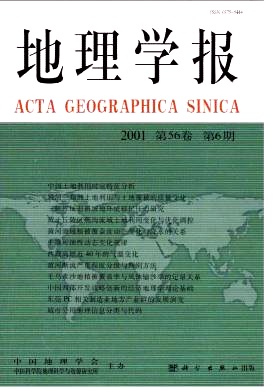XU Xue qiang, ZHANG Jun jun
With unfolding and deepening of the studies on urban sustainable development in the world, the reseach on comprehensive evaluation of urban sustainable development has also been carried out gradually. Guangzhou has acquired enormous achievements since the reform and opening up in 1978. On the one hand, urban economies have rapidly developed, where as on the other, urban environmental quality has declined, and social development lagged relatively. Firstly, aiming at the disunified dimensions of all kinds of indicators in the indicator system, the paper makes a standard treatment by the subjection function. Secondly, owing to the artificially selected reason, aiming at the overlap information which are included in all kinds of indicators, the paper eliminates the overlap information by the principal component analysis, and gets scores of SENI (sustainable environmental index), SECI (sustainable economic index), SSOI (sustainable social index) and cumulatives of principal components, and then calculates SENI, SECI and SSOI by add weigh models. Lastly, on the basis of SENI, SECI and SSOI, the paper designs 3 indexes reflecting the connotation of urban sustainable development, which are Level Index ( LI ), Development Index ( DI ) and Coordination Index ( CI ), and scale development levels, development rates and development coordination condition of urban sustainable development respectively. On the basis of environmental and socio economic development data from 1980 to 1996, the paper makes a comprehensive evaluation of urban sustainable development. The results are: as far as LI’s concerned, there are several characteristics on urban sustainable development in Guangzhou city: ① The stage of urban sustainable development is turning into high grade stage, including slow development stage (1980~1984), recessionary development stage (1984~1987), adjustable development stage (1987~1991), fast development stage (1991~1994) and slow development stage (1994~1996), which is accorded with the law of period in evolution and period between promotion of urban sustainable development. ② The change of urban environmental, economic and social development is dissynchronous. The relation of environment and economy puts up: when economy develops at high speed, there would be a serious environmental phenomena; when government strengthens the adjustment, a promising environmental phenomenon would occur. On the whole the relation of environment and economy is negatively related. The relation of environment and society is not taken on relativity as a whole. The relation of economy and society is taken on positive relativity, and indicates economic growth can drive social progress. At the same time, the paper raises the rate of social progress is much lower than the rate of economic growth, and in a sense the lag of social development will limit economic growth in the future. As far as DI’s concerned, urban sustainable development in Guangzhou city is taken on several characteristics: ① Environmental subsystem is taken on no sustainable feature; ② economic subsystem is taken on sustainable feature; ③ social subsystem is taken on sustainable feature; and ④ urban development is taken on sustainable as a whole because of pull effects of socio economic subsystem. As far as CI’s concerned, urban development is taken on weak sustainability, that is to say that urban environment and socio economic development are in harmonious. In a word, by the above mentioned comprehensive evaluation, the paper raises economic development there is at the expanse of serious environmental phenomena in the initial and middle stages of the reform and opening up in China, which counteract economic growth. It also raises there is non sustainable style of urban development, which cannot bring into urban development as a whole.
